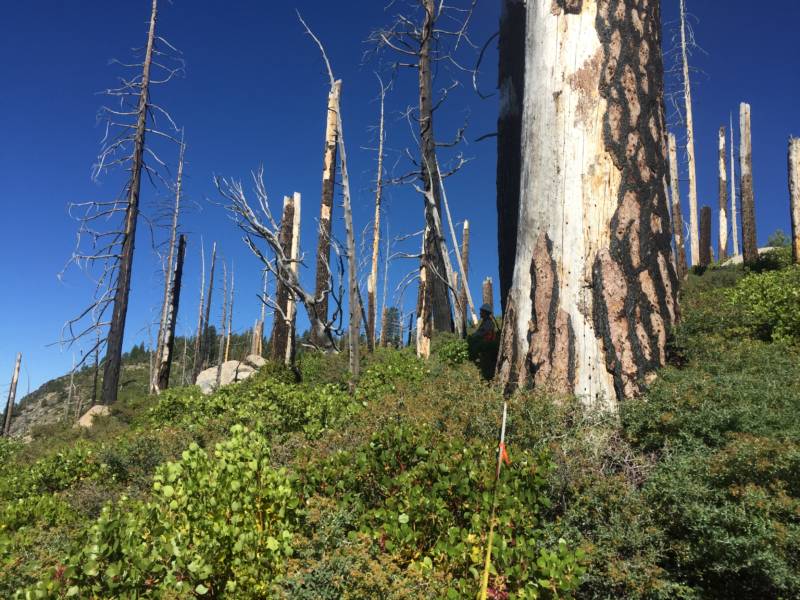Less Diversity
Field sampling by the researchers found less plant diversity on the landscape after high-intensity fires, especially in shrublands. And when fire returns to that landscape, it’s more likely “that system is going to continue to be a high-severity site, that’s going to continue to be a shrub field potentially indefinitely,” Richter said.
It wasn’t always this way in California’s yellow pine mixed-conifer forests, Richter says. Historically, the fires that burned these forests at elevation were low- and moderate-intensity. “These weren’t really fierce, fierce fires with really tall flame lengths in the canopies of trees,” Richter said.
Richter thinks of these less-intense fires as recurring events that “chew up” but don’t destroy understory fuels on the ground, thus preserving an array of plants after the fire is out.
The study supports the idea that active management of forests, including reducing tree density and managing understory growth with prescribed fire and mechanical means, promotes ecosystem health. The study’s authors acknowledged the challenges to managing forests this way, including increased costs and legal opposition.
But, Richter said, “Our concern is that if these shrub fields continue to burn, that there will be an overall loss of understory plant diversity in these sites at a landscape level.”

